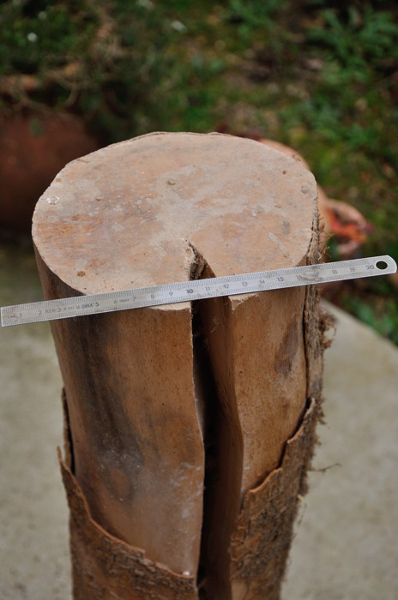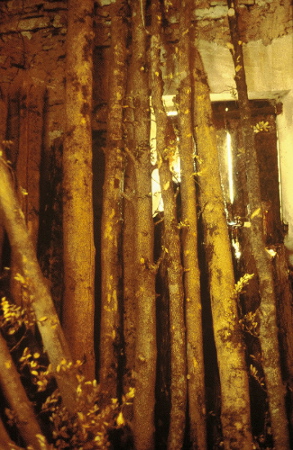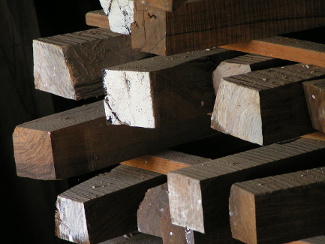PHILIPPE BOLTON
HANDMADE RECORDERS & FLAGEOLETS
Seasoning wood for making recorders

Shrinking of the wood during seasoning can cause a crack up to 1 or 2 centimetres wide. |
Wood is essentially made up of parralel tubes that transport the sap necessary for the tree's life.
Therefore when a tree is felled it is very damp, being full of sap which needs to be eliminated before the timber can be used.
During the seasoning process, this moisture leaves the wood and the cells contract. The outside layers dry more quickly than the centre causing tension which can lead to splitting and deformation. This is normal, and should
not cause any worry if done correctly.
|
Boxwood is often dried in logs, standing vertically against walls so that air can circulate around them, in a cool place that is sheltered from sun and rain. Other timbers are stocked as planks or squares separated by stickers (small dry strips of wood). To prevent accelarated drying at the ends which would cause further cracking, these should be protected with a coat of paint, wax or PVA glue.

|

Above, wood seasoning in squares separated by stickers |
